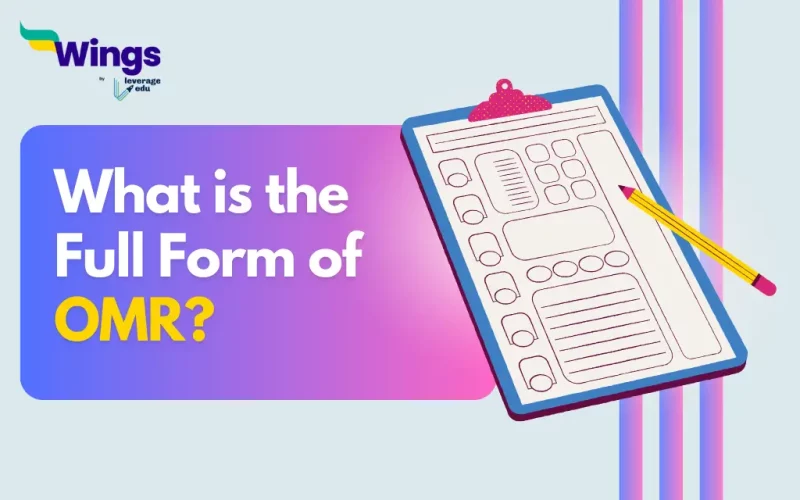OMR stands for Optical Mark Recognition. OMR is a technology that is used to capture human-marked data from documents, such as surveys, tests, and questionnaires. Moreover, the system relies on the detection of marks made by respondents using a specific type of pen or pencil. Additionally, OMR technology is widely utilized in different fields due to its efficiency and accuracy in data collection.
Also Read: What is the Full Form of ICT?
Who Uses OMR?
Table of Contents
The Uses of OMR come into play in numerous aspects such as:
- Educational institutions commonly use OMR for grading multiple-choice exams and surveys.
- In addition, Government agencies use it for collecting data on forms like census surveys.
- Market research companies leverage OMR to process large volumes of survey responses quickly.
- OMR is also employed in healthcare for patient feedback and data collection.
What are the Two Uses of OMR?
In addition, there are two areas where OMR is used extensively they are as follows:
- Education Sector: OMR technology is extensively used in the education sector for grading objective-type exams. It guarantees quick and accurate evaluation of answer sheets, hence saving time and reducing human errors. Moreover, OMR is employed in entrance exams, scholarship assessments, and surveys within educational institutions.
- Survey and Data Collection: OMR is widely used in surveys conducted by government bodies, market research firms, and other organizations. The respondents mark their choices on OMR sheets, and the technology helps with the rapid compilation and analysis of data. This is particularly useful for large-scale surveys where efficiency and accuracy are crucial.
Also Read: What is the Full Form of OCR?
What types of documents can be processed using OMR?
OMR technology is effective for processing documents that have pre-determined answer choices. This includes materials like:
- Exams and quizzes: Answer sheets with multiple-choice or fill-in-the-blank questions.
- Surveys and questionnaires: Forms with closed-ended questions and checkboxes.
- Feedback forms: Documents that collect ratings or opinions on a specific topic.
- Assessments: Forms used to evaluate knowledge, skills, or performance.
These documents often require respondents to indicate their choices using methods like:
- Marking with a pencil or pen
- Filling in bubbles
- Checking boxes
What are the devices used in OMR scanning?
Some OMR scanners use light to read the marks on the sheet. They shine on the sheet and measure how much light bounces back. If there’s a dark mark, the light will be absorbed, so less light will bounce back. If there’s no mark the light will bounce back more. This is how the scanner knows the marks are.
What are the Advantages of OMR?
The Advantages of OMR are:
- Speed and Efficiency: OMR technology allows for the quick processing of a large volume of forms, thus making it highly efficient for tasks such as grading exams or collecting survey data.
- Accuracy: OMR systems are designed to minimize errors in data collection and processing by providing reliable and accurate results.
What are the Disadvantages of OMR?
On the contrary, the Disadvantages of OMR are:
- Limited to Marking: OMR is primarily designed for marking predefined choices. It may not be suitable for tasks that require the recognition of free-form handwriting or more complex data.
- Initial Setup Costs: The implementation of OMR systems may involve initial setup costs which include the purchase of specialized hardware and software. This could be a constraint for smaller organizations.
Popular Full Forms
We hope this blog has helped you understand the full form of OMR and everything related to it. If you want to know more, find the 300+ full forms list on our blog. In the world of short forms, you can rely on the Leverage edu page to know about more full forms like this! Connect with us study abroad experts to achieve your international dream today!
 One app for all your study abroad needs
One app for all your study abroad needs













